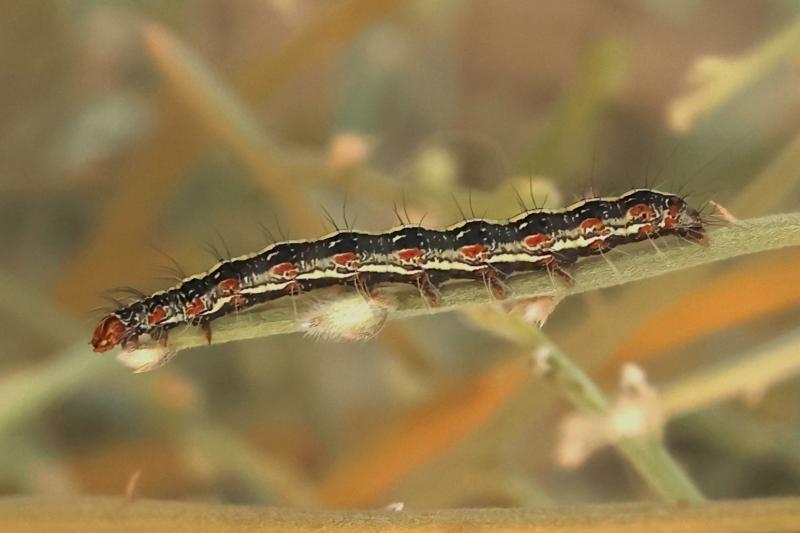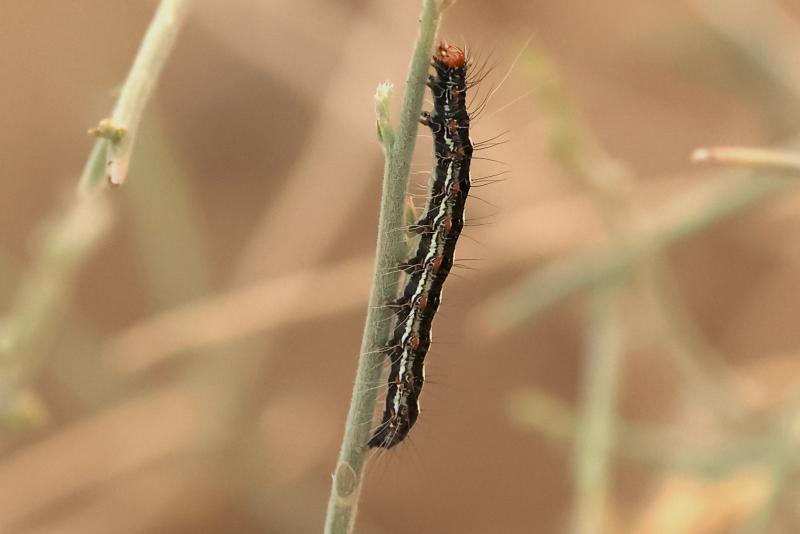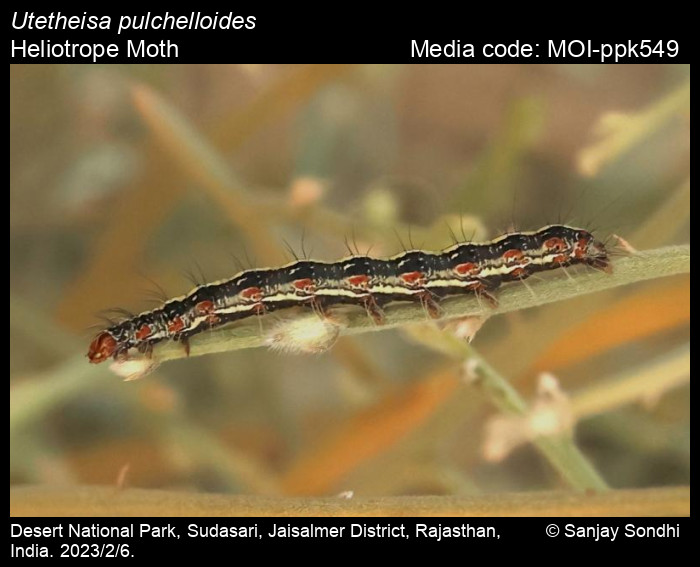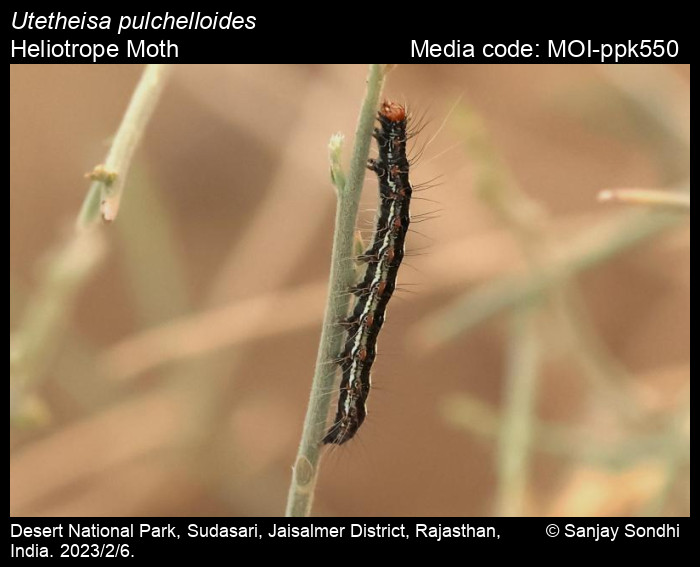Image


Life stage
Email (of contributor)
sanjay.sondhi1@gmail.com
Notes (optional)
Utetheisa pulchelloides Hampson, 1907 life cycle. Mass emergence of this species in February 2023. Dozens of caterpillars and adults.
Diagnosis (adult). This (pulchelloides) and the next species (lotrix) are most reliably separated by examination of the male genitalia. There are differences in the male antennae (Roepke, 1941; Robinson, 1971) and also a usually reliable difference in the forewing: there is a red patch between the more elongate pair of black marginal marks at the tornus and the subdorsal black spot of the submarginal in pulchelloides that is lacking in lotrix.
Early stages (Vide MOB)
Biology. The larva (lotrix) in Fiji is lemon-yellow with black and orange patterning. The dorsal stripe of pale colour is broken by pairs of black bands that contain an orange band. The flanks, are broadly pale with two dark spots and an oblique orange-brown bar on each segment. The head is pale tan.
Biology. The larva (pulchelloides) in Fiji is bright lemon-yellow with black patterning (Robinson & Robinson, 1974). The ground colour forms a narrow dorsal stripe broken by black at the centre of each segment, and is more evident in a longitudinal external zone though not to the same extent as in lotrix. The head is dark tan.
http://lepidoptera.butterflyhouse.com.au/arct/lotrix.html for lotrix caterpillar.
http://lepidoptera.butterflyhouse.com.au/arct/pulchelloides.html for pulchelloides caterpillar.
http://www.pyrgus.de/Utetheisa_pulchella_en.html for pulchella caterpillar.
Good match of image and description of caterpillar to that of Utetheisa pulchelloides.
RS: Agree with the ID. The description and images match well.
Diagnosis (adult). This (pulchelloides) and the next species (lotrix) are most reliably separated by examination of the male genitalia. There are differences in the male antennae (Roepke, 1941; Robinson, 1971) and also a usually reliable difference in the forewing: there is a red patch between the more elongate pair of black marginal marks at the tornus and the subdorsal black spot of the submarginal in pulchelloides that is lacking in lotrix.
Early stages (Vide MOB)
Biology. The larva (lotrix) in Fiji is lemon-yellow with black and orange patterning. The dorsal stripe of pale colour is broken by pairs of black bands that contain an orange band. The flanks, are broadly pale with two dark spots and an oblique orange-brown bar on each segment. The head is pale tan.
Biology. The larva (pulchelloides) in Fiji is bright lemon-yellow with black patterning (Robinson & Robinson, 1974). The ground colour forms a narrow dorsal stripe broken by black at the centre of each segment, and is more evident in a longitudinal external zone though not to the same extent as in lotrix. The head is dark tan.
http://lepidoptera.butterflyhouse.com.au/arct/lotrix.html for lotrix caterpillar.
http://lepidoptera.butterflyhouse.com.au/arct/pulchelloides.html for pulchelloides caterpillar.
http://www.pyrgus.de/Utetheisa_pulchella_en.html for pulchella caterpillar.
Good match of image and description of caterpillar to that of Utetheisa pulchelloides.
RS: Agree with the ID. The description and images match well.
Name for copyright (do not include copyright symbol)
Sanjay Sondhi
HighLighted Contributions
No
Species Node
Overwrite img


Organism
Butterfly
Moth Taxon search:
Month
February
Year
2023
Day
6
Choose copyright license
Copyrighted (all rights reserved)